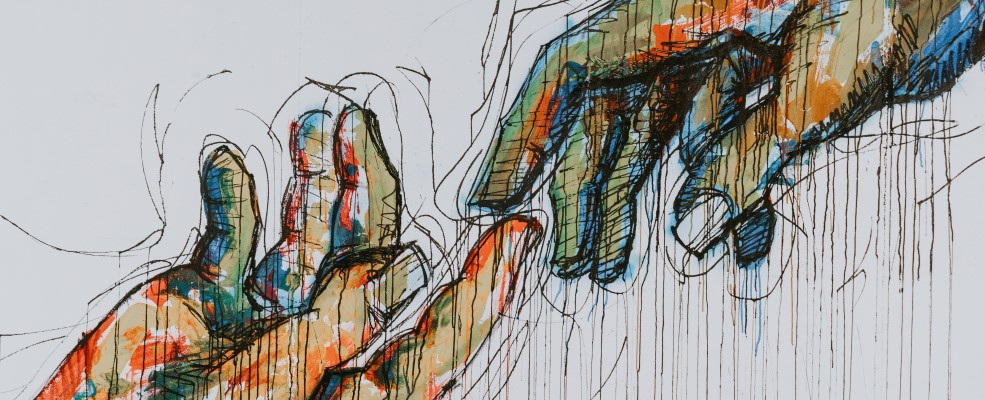In Anarchical Fallacies (1796), the English utilitarian philosopher Jeremy Bentham said that the concept of natural rights was nonsense and that to claim rights not prescribed in the laws of the state was ‘nonsense on stilts.’ He argued that to confuse wishing that we possessed a right with the existence of the right itself was a fallacy. Moreover, the rights recognized by state law are granted by the government, guaranteed by the judiciary, and enforced by its control of the armed forces and police. There would, said Bentham, be anarchy if the advocates of natural rights were to succeed in challenging those conferred legally by the state. There is also the Marxist view of law as part of an ideological superstructure derived from a class-based economy.
On 10 December 1948, the United Nations General Assembly, meeting in Paris, adopted a Universal Declaration of Human Rights. It considered this an historic act in the mission of the United Nations to maintain world peace and liberate individuals from unjustified oppression. The Declaration enshrined rights ranging from everyone being born free and equal in dignity and rights (article 1) to no state, group or person having any right to destroy any of the rights and freedoms set out in the document (article 30). Among other well-meaning platitudes, the Preamble states:
Whereas recognition of the inherent dignity and of the equal and inalienable rights of all members of the human family is the foundation of freedom, justice and peace in the world,
Whereas the peoples of the United Nations have in the Charter reaffirmed their faith in fundamental human rights, in the dignity and worth of the human person and in the equal rights of men and women and have determined to promote social progress and better standards of life in larger freedom,
Whereas Member States have pledged themselves to achieve, in co-operation with the United Nations, the promotion of universal respect for and observance of human rights and fundamental freedoms,
The Preamble, supported by thirty articles, set out what the General Assembly regarded as fundamental human rights to be recognized and protected universally. The Declaration was a statement of utopian internationalism and the ideal of common humanity. This was in the aftermath of a destructive world war, with international politics divided ideologically and experiencing the traumas of post-colonialism.
The General Assembly urged the United Nations Economic and Social Council (ECOSOC) and Specialized Agencies, such as the United Nations Educational, Scientific, and Cultural Organization (UNESCO), the International Labour Organization (ILO), and the World Health Organization (WHO), and non-governmental organizations generally to promote the Declaration. Member states were asked to show commitment by disseminating it as widely as possible, especially through formal education. It was certainly much translated and printed but typically of such documents not necessarily read. The 10 December was designated Human Rights Day.
Crucially, the Declaration was not a treaty signed or ratified by the member states. It was not binding formally. However, the rights and freedoms it declared were used to create binding instruments such as the European Convention on Human Rights agreed in 1950. It has also been followed by many other human rights statements, including some formalized as treaties. On the 75th anniversary, the United Nations Office of the High Commissioner for Human Rights called on member states to “rejuvenate the Universal Declaration of Human Rights, demonstrate how it can meet the needs of our time and advance its promise of freedom, equality and justice for all.”
A mechanism is the United Nations Universal Periodic Review (UPR) which considers the human rights records of member states. The issues covered include human rights protection concerning immigration and asylum, the many forms of potential discrimination, hate crimes, and the ratification of UN human rights treaties. This provides valuable information although of varied reliability, while there is often a considerable gap between formal statements and practice. So, what is the reality seventy-five years on? The law of states remains fundamental. But states are by their political nature protective of sovereignty and power. The United Nations, aggravated by the Security Council system, cannot enforce an alternative.
The result is seen in the repressive records of states described euphemistically by the UN Human Rights Council, which replaced the United Nations Commission on Human Rights in 2006, as ‘’… moving at different speeds, as being faced by unique challenges.” This includes elected members of the Human Rights Council itself. Russia, also a Security Council member, was suspended in 2022 for gross and systematic violations of human rights committed during its invasion of Ukraine. However, the International Criminal Court’s Arrest Warrant for Vladimir Putin, President of Russia, and Maria Lvova-Belova, Russian Commissioner for Children’s Rights, alleging responsibility for the war crime of unlawful deportation and transfer of children during the current Russo-Ukrainian War remains unenforced. The Organization for Security and Cooperation in Europe, the Commission of Inquiry on Ukraine, and the Special Rapporteur for Human Rights in Russia have fared no better.
Unfortunately, there are many other examples, too many to list here, in which we see historical hatreds and enormities renewing themselves, taking or damaging human life and its prospects. There are also new forms of human exploitation, including victims of criminality. We should reflect on this as the British Government struggles to find a policy for immigration and asylum. Identifying, protecting, and strengthening human rights are best done through legal principles and commitments that are accepted and shared internationally as solutions to common problems. Despite continuing good intentions on the part of many, anything less is ‘nonsense on stilts.’
Image credit: photo by Claudio Schwarz on Unsplash

